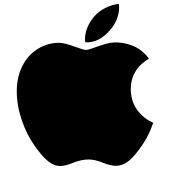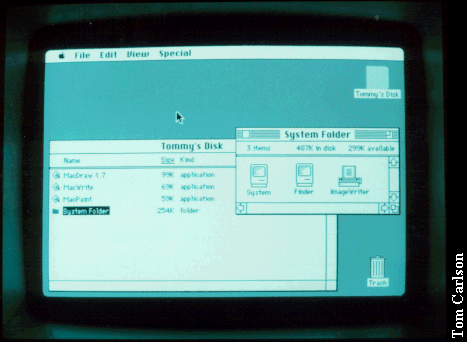What is Linux?
In this post, we first explore the basic concepts of Linux. For example, the definition of the operating system and the nature of UNIX. Then, We will look at Linux features such as security, customization, and drivers.
What is Linux?
According to Wikipedia, Linux is a family of free, open-source operating systems based on the Linux kernel. Then, the Linux kernel is an operating system kernel which first published on September 17, 1991, by Linus Torvalds. Generally, operating system experts typically package Linux in a Linux distribution.

What is an operating system?
Imagine you have a brand new computer and no one has ever connected any type of disk to it. If you turn on this computer, after a few tries it will eventually give you a message that it cannot find an operating system.
Therefore, the most important software of a computer is the operating system. Without an operating system, it would not be possible to browse the web, play music, and write any text using a computer.
In fact, without an operating system, a computer is a useless piece of hardware.
You may have heard the names of some popular operating systems, but you do not know what they mean. For example, Microsoft has designed its famous operating system called Windows. Apple has two operating systems, Linus Torvalds (for Macs) and iOS (for iPhones and iPads).
An operating system is software that sits between you as a user and the computer hardware. If you click the screen icon with the mouse, the operating system will interpret that you want to load the program you clicked on.
So for this to happen, the operating system needs to know the screen to be able to show you what is happening.
Also, the operating system should know almost everything about the hardware installed in the computer.
That means knowing how much RAM (computer memory) there is, recognizing the system’s hard disk, USB, and CD drives, as well as keyboards, sound controllers, graphics controllers, printers, scanners, and everything connected to the computer.
Softwares on OS
When you start typing a letter, you have already opened a word processor software as software. Experts called This software application software, it is based on the operating system.
So far we have found that having an operating system is essential for any computer, but what else does the operating system do? The most basic task of the operating system is to manage our files and data.
A basic operating system should be able to do the following with files and folders:
- Create them
- Move them to other directories (also called folders)
- Rename them
- Copy them
- Delete them
- Receive or send files from other devices such as printers/scanners or the Internet
Now you have an idea of the concept of the operating system and we can talk about a specific operating system called UNIX which is the ancestor of Linux.
UNIX

The Unix operating system was born in 1969 at Belle Labs, a subsidiary of AT&T. There are many different types of Unix that make it the oldest commercial operating system available, much earlier than Microsoft Windows and Apple Mac.
History of Unix
Linux is just a type of Unix that people know that for being open source and free. Most different versions of Unix are still updating and are still in use around the world today. Here are some of the most popular Unix brands that you may have encountered or heard of.

This version of Unix developed in 1993 by Sun Microsystems (later acquired by Oracle). Solaris was one of the first commercial versions of Unix until the introduction of open source and Linux software.

HP’s implementation of the standard Unix V system is known as HP-UX, which released in 1984 and is still used today in many enterprise environments.

IBM also released a special version of its corporate Unix in 1986, dedicated to the company’s hardware. AIX represents a series of Unix commercial operating systems that originally released for IBM workstations and now support different hardware platforms.
Why do not we use Unix today?

In 1981, a small company in Seattle called Microsoft introduced an os. Coincidentally, IBM invited them to provide an os for their new small home/office computer.
People called the IBM PC, and it had no graphics, meaning the user had to enter Unix commands, but it was less powerful. The main problem with this os, called the Microsoft Computer os (MS-DOS), was that it did not have features such as multi-user or multi-tasking, and it did not support the networking standard.
In the early 1990s, MS-DOS gradually became very popular. Unix was still by far the most powerful os of the time. But the problem with Unix was that it was expensive, and there were some legal issues between Unix license providers. Using MS-Dos was more sensible for small and medium-sized enterprises, as it ran most of the software they needed, although it did not have the advantages of Unix.
Apple

During the 1980s, Apple introduced a new PC that was independent and did not run any PC software. Because it used its own os called multi-user.
This time Apple decided to build a graphical os and then used color, images, icons, and even sound. So, instead of leaving everything to the keyboard and text commands, it was possible to perform similar tasks by clicking and moving the mouse.
This change was completely revolutionary at the time and completely changed the face of the tech world, but it still did not have the advantage of being multitasking and Unix networking.

At the same time, Unix introduced a graphical operating system that provided a visual interface. This version’s name was the X window system.

The difference between Linux and Unix
From 1991 to 1995, many computer and engineering students at the university became familiar with the power of Unix. Many students amazed by the new features like Email, Web, etc. They were working at home with their 16-bit computers, waiting for all these features to enter their homes one day.
In 1991, Linus was a Finnish student studying computer programming at the University of Helsinki. He got tired of his home computer running MS-DOS and decided to start developing Unix kernel. A kernel is a program that forms the heart of an operating system and communicates directly with the hardware. Linus wanted to offer its kernel software for free because it saw it as a hobby, not a business. He also wanted to know what other people thought of his work, so he decided to publish the designed kernel for free on the Internet.
